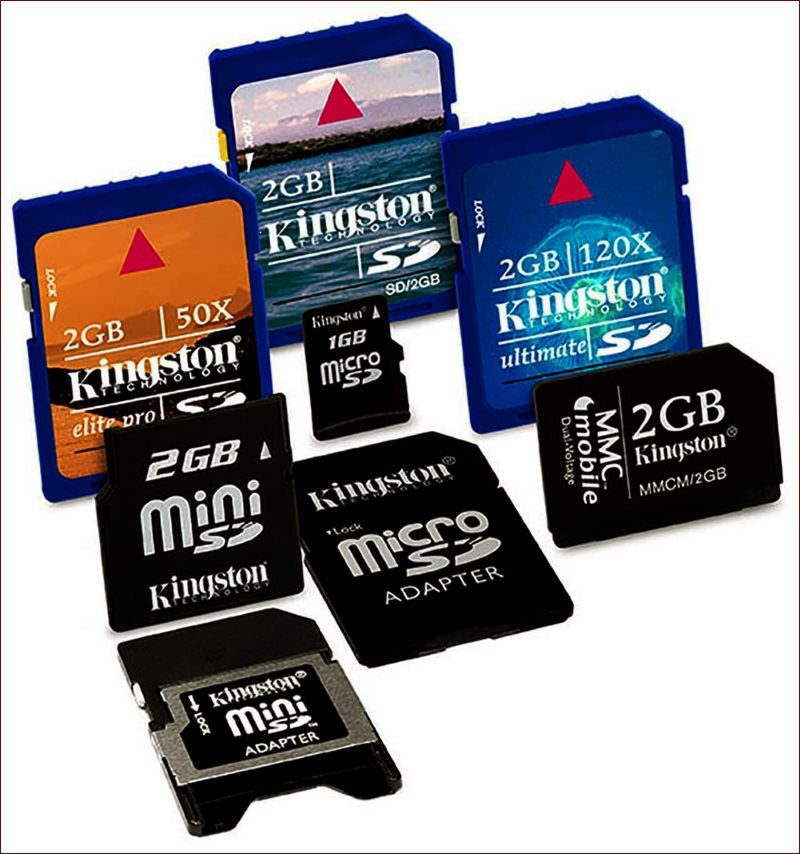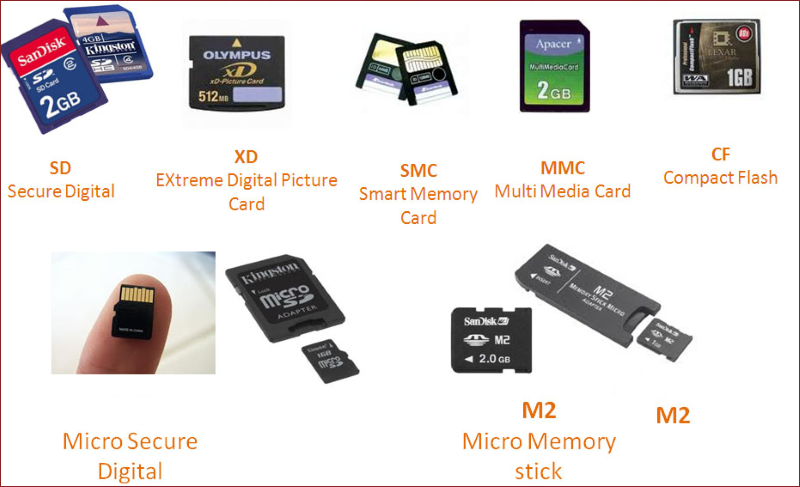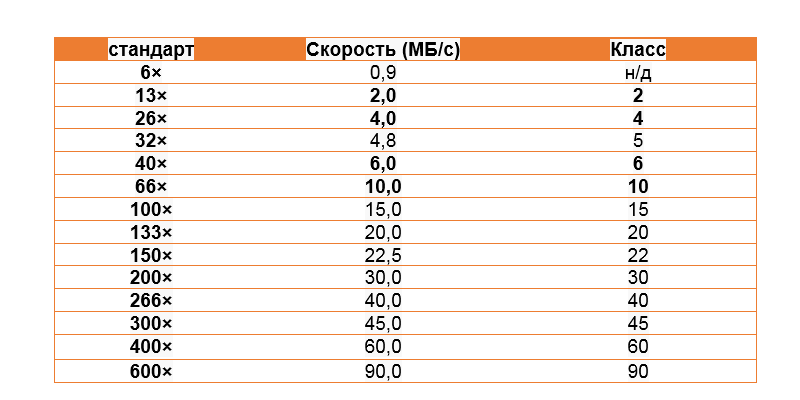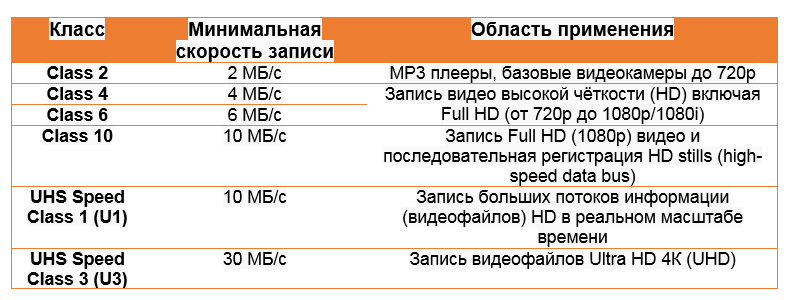Memory Card Classification
Hi, Giktayms! Thanks to advertising, we know that “not all yogurts are equally useful.” It is fair to say the same about memory cards. Slightly strange photographers, operators and fans of extreme for some reason looking for high-speed cards, although it would seem that what's the difference? Under the cut - the classification of memory cards and "recommendations of the best dog breeders" for choosing the class of the card.

Previously, everything was conditionally simple - some multiplier was put on the cards - “100x” or “133x” and it immediately became clear - who is closer to the end of the ruler, he is good, and more expensive than all.
')

Such a system has been applied to all consecutive standards of memory cards and ... CD-ROM devices. 1x = 150 Kb / s. Designations for CD-ROM, CompactFlash and SD were calculated using this simple formula (for DVD the balance is slightly different, one DVD-speed is equal to about 9 speeds of CD - 1352 Kb / s). Immediately make a reservation about xD-Picture card, Memory Stick and Derivatives, Multimedia Card, SmartMedia and other already in fact standards that have died in Bose, I will not speak.

Today on the market (mostly) CompactFlash and SecureDigital are presented, I’ll talk about them later (I know about the XQD format, but its niche is currently limited to one camera - Nikon D4).
Compact Flash is a fairly simple option to understand - there are only two types of cards - Compact Flash I and Compact Flash II (MicroDrive). Moreover, option number two is also practically not used. Cards are not interchangeable, Compact Flash I is universal, but CF II can only be used in cameras with CF II support. There is a city legend that the cards differ only in thickness, and the electrical component and pinout are completely identical.
Below is the layout corresponding to the designation “in X” speed in megabytes.

In fact, the speed in megabytes is rarely indicated on brochures for Compact Flash memory cards - manufacturers offer the good old “xix” specification. The Kingston product range has a 600x product index, but it would be foolish to deny that competitors specializing in products for professional photographers have products faster.

Secure Digital is the most popular format at the moment, but also the most confusing. To begin with, there are three physical sizes of this standard - SD, miniSD, microSD.

To a small relief from readers, miniSD is almost gone from the stage, and “there are two of them left”. SD is the birthplace of cameras, microSD - smartphones, tablets, action cameras, DVRs. Of course there are exceptions, but the vast majority of devices on the electronics market are equipped with this way.

Electrically cards are divided into three types - SD, SDHC (Secure Digital High Capacity), SDXC (Secure Digital eXtended Capacity). Each device that is compatible with SDXC will be compatible with previous card types.
Cards have been introduced to designate cards by the SD Card Association.

In reality, all these classes and X's do not apply, users are accustomed to only six classes of Secure Digital memory cards. Below in the plate of their names, minimum performance and typical application.

The most important thing in the production of high-grade memory cards is not just to meet the minimum parameters, but to be much better in speed. Many modern action cameras shoot in 4K resolution, and all this needs to be recorded on a memory card, and the standard prescribes only 30 MB / s. It is not for nothing that high-speed cards appear, for example, Kingston UHS-I U3 , such microSDXC do not care about missing frames on video or broken files.

Choose memory cards correctly and stay with our blog on GeekTimes!

Previously, everything was conditionally simple - some multiplier was put on the cards - “100x” or “133x” and it immediately became clear - who is closer to the end of the ruler, he is good, and more expensive than all.
')

Such a system has been applied to all consecutive standards of memory cards and ... CD-ROM devices. 1x = 150 Kb / s. Designations for CD-ROM, CompactFlash and SD were calculated using this simple formula (for DVD the balance is slightly different, one DVD-speed is equal to about 9 speeds of CD - 1352 Kb / s). Immediately make a reservation about xD-Picture card, Memory Stick and Derivatives, Multimedia Card, SmartMedia and other already in fact standards that have died in Bose, I will not speak.

Today on the market (mostly) CompactFlash and SecureDigital are presented, I’ll talk about them later (I know about the XQD format, but its niche is currently limited to one camera - Nikon D4).
Compact Flash is a fairly simple option to understand - there are only two types of cards - Compact Flash I and Compact Flash II (MicroDrive). Moreover, option number two is also practically not used. Cards are not interchangeable, Compact Flash I is universal, but CF II can only be used in cameras with CF II support. There is a city legend that the cards differ only in thickness, and the electrical component and pinout are completely identical.
Below is the layout corresponding to the designation “in X” speed in megabytes.

In fact, the speed in megabytes is rarely indicated on brochures for Compact Flash memory cards - manufacturers offer the good old “xix” specification. The Kingston product range has a 600x product index, but it would be foolish to deny that competitors specializing in products for professional photographers have products faster.

Secure Digital is the most popular format at the moment, but also the most confusing. To begin with, there are three physical sizes of this standard - SD, miniSD, microSD.

To a small relief from readers, miniSD is almost gone from the stage, and “there are two of them left”. SD is the birthplace of cameras, microSD - smartphones, tablets, action cameras, DVRs. Of course there are exceptions, but the vast majority of devices on the electronics market are equipped with this way.

Electrically cards are divided into three types - SD, SDHC (Secure Digital High Capacity), SDXC (Secure Digital eXtended Capacity). Each device that is compatible with SDXC will be compatible with previous card types.
Cards have been introduced to designate cards by the SD Card Association.

In reality, all these classes and X's do not apply, users are accustomed to only six classes of Secure Digital memory cards. Below in the plate of their names, minimum performance and typical application.

The most important thing in the production of high-grade memory cards is not just to meet the minimum parameters, but to be much better in speed. Many modern action cameras shoot in 4K resolution, and all this needs to be recorded on a memory card, and the standard prescribes only 30 MB / s. It is not for nothing that high-speed cards appear, for example, Kingston UHS-I U3 , such microSDXC do not care about missing frames on video or broken files.

Choose memory cards correctly and stay with our blog on GeekTimes!
Our previous posts:
- RAISE and DuraWrite - technologies for increasing the service life and reliability of SSD drives
- DDR3 vs. DDR4. Theoretical differences
- Overview of two high-capacity memory cards: microSDXC 128 Gb and SDXC 256 Gb
- Review of the Kingston SM2280S3 / 120G SSD
- Factory Tour in China
- Kingston MobileLite Wireless G2 Wireless Card Reader Review
Source: https://habr.com/ru/post/365347/
All Articles